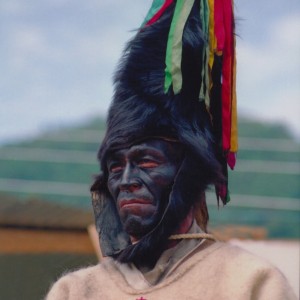By José Alberto Gaytán García*
Ten kilometers of San Cristobal de Las Casas, heading to the highlands of Chiapas, is located the city of San Juan Chamula. The taxi that brought me and my wife to this place charged us sixty mexican pesos. It took him fifteen minutes from San Cristobal to the entrance of the village. The taxi driver told us that he could not take us deeper into the village because it was forbidden, that if he was caught picking up or dropping off passengers beyond this point he could be arrested by the drivers of San Juan Chamula. Out of courtesy we said that it was fine to leave us there. The explanation of the driver, seemingly unimportant, would help us understand one of the most shocking experiences at the carnival in San Juan Chamula.
Before I tell you what happened to us, I must tell you that the sixty thousand habitants living in this city belong to the Tzotzil ethnic group, a tribe of Mayan origin that developed in the southeast of Mexico after the fall of the Mayan empire. Also, I should mention that before the Spaniard colonizers arrived in Chiapas, this Tzotzil settlement was of high, strategic, military, political, commercial and religious importance.
On June 24, 1524 the population was established with the name of San Juan Bautista, since according to the legend, this saint or prophet of Jewish origin, also known as St. John the Baptist, did the Chamulans a favor by drying up the swamps that were in the region so they could construct their own town. Also the legend says that Saint John went to live in one of the hills surrounding the village to protect the Chamulans. In gratitude, every June 24, the entire people and communities of the region, offer its patron saint a party full of magic, colors, music, and pre-hispanic rituals. As time passed, the party merged with shocking pagan and religious customs. The food offered this day is based on bean tamales, beef stew and much posh, which is strong corn liquor. The Chamulans take the posh to celebrate and to “heal” the body and soul in shamanic rituals and religious ceremonies.
San Juan Chamula for centuries women have been seriously alienated in many aspects of the social structure of the community. One example is to comment on the case of the organization of the festival of San Juan where women are prohibited from participating. This responsibility lies with the chief steward, who for a year raises funds for the celebrations, which begin 15 days earlier with the washing of the clothes of the patron saint.
On June 24, thousands of indigenous people from the communities come down from the mountain to participate in the festivities. Chamulans use this day to baptize their children, who in honor of San Juan name them Juan or Juana. After the baptism, the people go dancing. I must clarify dear readers; we are not talking about any dance it is a “Pachangon” big party with live music from the best bands in Mexico. Although we are near the border with Guatemala, here in the south northern music is a hit, so every year famous northern groups such as “Los Huracanes del Norte”, “Los Tucanes de Tijuana” and “Los Tigres del Norte” come to the festivals and fairs in the region, who recently were here and only charged around two million mexican pesos for appearing.
I was telling you that the taxi dropped us off at the edge of town, right in front of an old church called St. Sebastian. Believe me this is one of the most magical and amazing places you can find in the XXI century. The church has its own cemetery, but is not a vault like others that exist in the ancient peoples of Mexico; this is a pre-hispanic mayan cementery. The tombs are over 500 years old and have been here before the Spaniards arrived. The crosses on the graves are colorful and are not Christian but Maya crosses: those of black color are for women, blue for men and white for girls and boys. To be continued…
jalbertogaytangarcia@gmail.com
A43R6/17
Acerca del autor

- José Alberto Gaytán García ha escrito artículos y ensayos de corte académico en diarios y revistas de México y de los Estados Unidos; ha participado en importantes proyectos académicos e impartido conferencias sobre temas de historia, tecnología y educación en el marco de las relaciones entre México y los Estados Unidos, tema en el cual realizó sus estudios de doctorado en The Graduate School of Internacional Studies de la Universidad de Miami.
 Cultura General10 agosto, 2022Michio Kaku: científico del futuro
Cultura General10 agosto, 2022Michio Kaku: científico del futuro Cultura General29 junio, 2020Miguel Alcubierre: viajero de las estrellas
Cultura General29 junio, 2020Miguel Alcubierre: viajero de las estrellas Cultura General6 abril, 2020Niños brillantes (Segunda parte)
Cultura General6 abril, 2020Niños brillantes (Segunda parte) Cultura General6 abril, 2020Niños brillantes (Primera parte)
Cultura General6 abril, 2020Niños brillantes (Primera parte)






